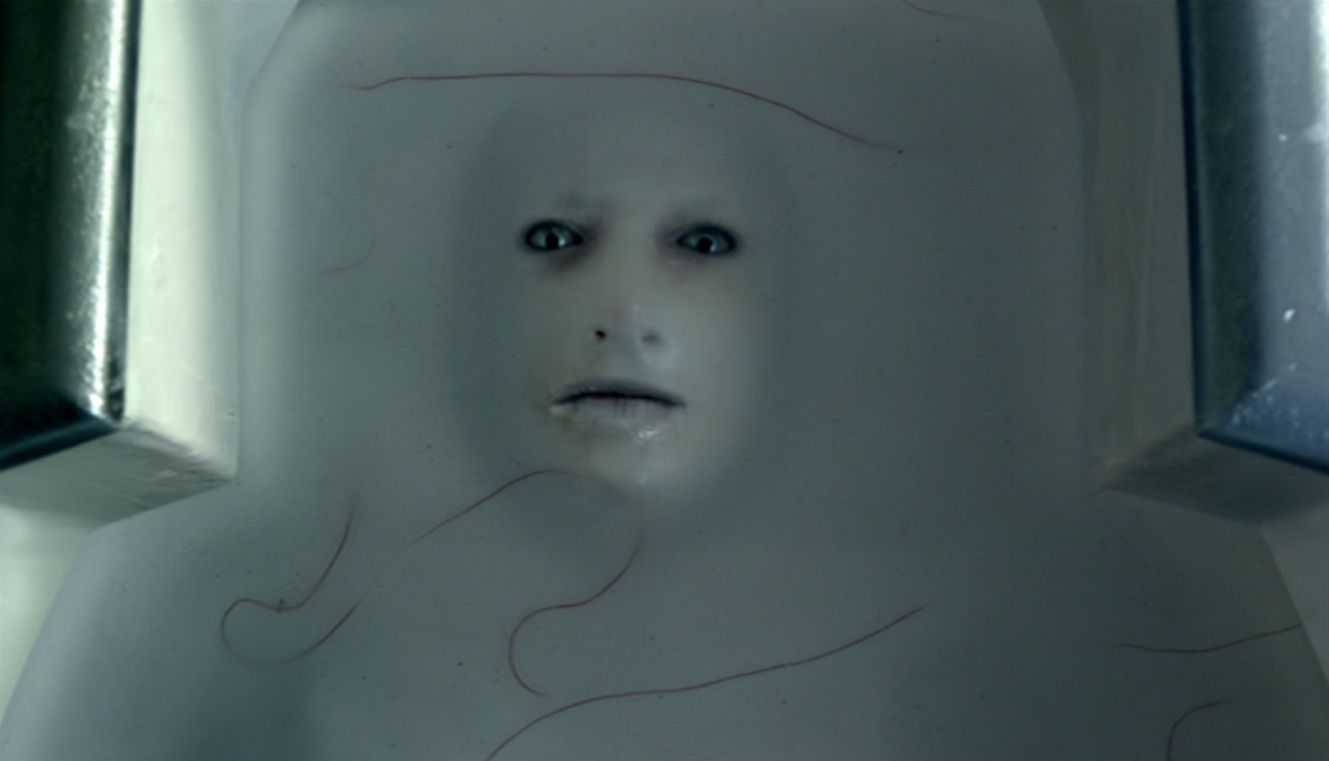
Aired 21 May 2011
Following two wildly different standalone episodes, Doctor Who returns to a more traditional tale with ‘The Rebel Flesh,’ the opening installment of a two-part story. With the pacing slowed down, writer Matthew Graham allows for a deep exploration of the characters and their choices in a near-future situation.
The Doctor, Amy, and Rory land in a twenty-second century monastery that is being used as a factory. To minimize risk with acid and more dangerous situations, the workers employ the use of technology that creates doppelgangers of themselves (called Gangers in the story). However, rather than creating a robotic replacement or some other base equivalent, the technology creates sentient beings with the same memories and emotional capabilities as the humans. This, of course, allows for powerful storytelling opportunities; as a strong solar storm wreaks havoc with the system, the established situation and means of doing things quickly change.
In general, the Gangers are brought to life effectively and given a bit of a sinister appearance- as long as they are not performing superhuman feats of stretching and such that strain the CGI verisimilitude and budget. However, the instability of their forms adds an intriguing aspect to their existence. What works best here, though, is that, as events progress, it’s easy to see why the Gangers become upset with the humans and even start to turn on them. The exploration of the motivations of what are supposed to be the antagonists of the piece genuinely makes them sympathetic figures for the most part and creates an equal balance of sorts for both sides as they strive to survive.
The duplicity of roles allows for an inherent unease in proceedings as nobody is quite sure who is who and, though this is a tough task to ask of anyone, so far everyone has done a good job of portraying the two versions of their characters. The standout so far is Sarah Smart’s Jennifer, though Raquel Cassidy’s Foreman Cleaves has had her strong moments as well. With another episode to go, though, all characters will undoubtedly have more time to develop as circumstances become more serious and dire.
This is another story that gives Rory more time in the spotlight as he continues to begin to shoulder more weight and become more integral to plot progression. With the series continuing to focus on Amy and Rory’s marriage and the potential pregnancy, Arthur Darvill is quickly becoming a strong and memorable companion in his own right, and it will be interesting to see if this dynamic becomes a focus later in the run.
The cliffhanger- again one that is not totally unexpected- is still a delight, and the fact that there is now a doppelganger Doctor around is sure to be key to how events unfold in the concluding ‘The Almost People.’ Matt Smith pulling double duty in that tale should be a treat to behold and surely explains why his role seems a bit more minimized here compared to some other stories. It is quite possible, though, that his Ganger could provide the solution to the riddle of his death seen in ‘The Impossible Astronaut,’ though that resolution is surely one to be saved for the finale.
With mostly strong effects, solid performances, and an intriguing core concept that effectively explores both sides of the dilemma, ‘The Rebel Flesh’ is good start to a tale more in the vein of classic Doctor Who. It’s clear that stakes here are just a warmup for ‘The Almost People,’ and the inclusion of a duplicate Doctor helps fuel anticipation even further for that concluding act.


December 27, 2020
[…] II; Demons Run I & II; Tapetrade; Review The Who; Junkyard Blog; Lyratek; Random Whoness; Doctor Who Reviews I & II; Who In […]